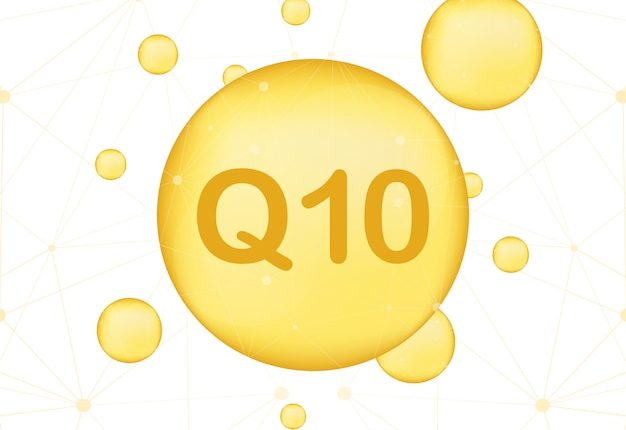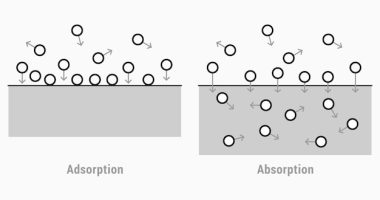Cyclophosphamide, a chemotherapy drug widely used in treating various types of cancer, is known for its efficacy but also for certain adverse effects, notably kidney damage. This form of drug toxicity remains a significant concern for oncologists and patients alike, as it can severely impact patient quality of life and limit therapeutic options. Recognizing the need for strategies to mitigate these side effects, recent research led by Ozlem Kara examines the protective role of coenzyme Q10, a compound known for its antioxidant properties, against kidney damage induced by cyclophosphamide.
Published in a recent study, Ozlem Kara’s research involved a controlled experiment with 30 female Wistar-Albino rats divided into three groups. The first group served as the control with no drug administration, while the second received 30 mg/kg of cyclophosphamide alone, and the third was treated with both cyclophosphamide and 10 mg/kg of coenzyme Q10 for a period of seven days. The health of the kidneys was assessed by examining histopathological changes in kidney tissues and measuring blood levels of malondialdehyde—a marker for oxidative stress—along with the activities of key antioxidant enzymes, catalase, and superoxide dismutase.
The results revealed that rats treated with coenzyme Q10 in conjunction with cyclophosphamide showed significantly less kidney damage compared to those treated with the chemotherapy drug alone. The study highlights the potential of coenzyme Q10, not only to improve outcomes for patients undergoing chemotherapy but also to reduce the incidence and severity of its side effects, thereby enhancing the overall effectiveness of cancer treatment protocols.
Cyclophosphamide stands as a cornerstone in the treatment of various malignant conditions, including some types of lymphoma, leukemia, and solid tumors. Its therapeutic efficacy is tempered by its notorious adverse effects, particularly its nephrotoxic impact—kidney damage which can manifest as acute kidney injury, chronic kidney disease, or electrolyte imbalances. This nephrotoxicity not only compromises the quality of life for patients but also restricts the dosage and duration of cyclophosphamide use, thereby potentially limiting its therapeutic effectiveness.
The pathophysiology of cyclophosphamide-induced kidney damage is primarily attributed to oxidative stress and inflammation. Upon administration, cyclophosphamide undergoes hepatic metabolism to form aldophosphamide, which further decomposes to phosphoramide mustard and acrolein. The latter is a potent cytotoxin associated with oxidative stress and subsequent tissue damage. The kidneys, which play a crucial role in filtering and excreting the metabolites of cyclophosphamide, are particularly vulnerable to damage from these toxic by-products.
Given the significant challenge posed by cyclophosphamide’s side effects, there has been a concerted effort within the scientific community to find effective protective agents that can mitigate these adverse impacts without compromising the drug’s anti-cancer properties. Among various antioxidants tested, coenzyme Q10 (CoQ10) has emerged as a promising candidate due to its potent antioxidant and anti-inflammatory properties.
Coenzyme Q10 is a naturally occurring compound found in every cell of the body, where it plays a critical role in the generation of energy and the stabilization of cell membranes. Importantly, it also acts as a scavenger of free radicals, thereby protecting cells from oxidative damage. Its use in clinical settings has been explored for various conditions characterized by oxidative stress, including cardiovascular diseases and neurodegenerative disorders.
In the specific context of cancer treatment, the rationale for integrating CoQ10 into chemotherapy regimens stems from its ability to bolster the endogenous antioxidant defenses of the body, potentially reducing the collateral damage inflicted by free radicals generated during cyclophosphamide metabolism. The study by Ozlem Kara builds upon this premise, systematically investigating whether CoQ10 can effectively protect against cyclophosphamide-induced nephrotoxicity.
By adopting a rigorous experimental approach involving Wistar-Albino rats, the study offers a controlled environment to explore the interactions between cyclophosphamide, kidney health, and antioxidant supplementation. The inclusion of histopathological examination and biochemical markers in the study design allows for a detailed assessment of both structural and functional aspects of kidney health.
This research not only fills a crucial gap in the existing literature regarding effective mitigation strategies against the nephrotoxic effects of cyclophosphamide but also paves the way for further clinical research. As oncology continues to evolve with an increasing emphasis on personalized medicine, the integration of supportive treatment such as CoQ10 could play a pivotal role in enhancing the therapeutic index of traditional chemotherapy agents. Ultimately, this could lead to more refined, effective, and patient-centric cancer treatment protocols.
Continuing from the insights into the potential beneficial effects of coenzyme Q10 in countering cyclophosphamide-induced kidney damage, Ozlem Kara’s research methodology meticulously designed the controlled experimental setup to ensure the provision of solid, verifiable data.
**Experimental Design:**
The study utilized 30 female Wistar-Albino rats, selected due to their genetic uniformity which minimizes biological variability in responses. The animals were acclimatized to laboratory conditions for a week before the experiment commenced, housed in a controlled environment with a 12-hour light/dark cycle, offered free access to food and water.
**Group Allocation:**
The rats were divided evenly into three groups:
1. **Control Group (n=10)**: Received no treatment, serving as a baseline for natural kidney health.
2. **Cyclophosphamide Group (n=10)**: Received 30 mg/kg of cyclophosphamide administered intraperitoneally once daily. This dosage was selected based on prior research indicating effectiveness in modeling moderate to severe nephrotoxicity without lethal outcomes.
3. **Coenzyme Q10 + Cyclophosphamide Group (n=10)**: Treated with 10 mg/kg of coenzyme Q10 administered orally, combined with the same cyclophosphamide regimen as the second group. The coenzyme Q10 was given one hour prior to the cyclophosphamide to ensure antioxidant defense mechanisms were active and potentially protective against the oxidative stress induced by the chemotherapy.
**Duration of the Study:**
The treatment was sustained over a period of seven days. This duration was chosen to allow for sufficient accumulation of drug-induced renal damage in the cyclophosphamide group and to observe the potential protective effects of coenzyme Q10 over the same period.
**Data Collection:**
The primary endpoints included histopathological analysis of kidney tissues and biochemical assays. At the end of the treatment period, the rats were euthanized under deep anesthesia, and their kidneys were promptly harvested. The kidney tissues were fixed in formalin, embedded in paraffin, and sectioned for histological examination under a microscope to assess structural damage.
**Biochemical Assessments:**
Blood samples were collected to measure the levels of malondialdehyde, an indicator of lipid peroxidation and oxidative stress. Additionally, the activities of catalase and superoxide dismutase, essential antioxidant enzymes, were quantitatively analyzed using spectrophotometric methods. These biochemical markers were crucial in objectively determining the extent of oxidative damage and the efficacy of the antioxidant defense.
**Statistical Analysis:**
Data were analyzed using appropriate statistical methods. Differences between groups were evaluated using one-way ANOVA followed by post-hoc tests to determine specific pairwise differences. The level of significance was set at 0.05 for all tests.
This thorough methodology not only ensured that the data collected was robust but also allowed the researchers to make informed conclusions about the efficacy of coenzyme Q10 in mitigating cyclophosphamide-induced nephrotoxicity. The controlled experimental design, combined with detailed biochemical and histological assessments, provided a comprehensive understanding of the interactions and effects of these compounds on kidney health.
**Key Findings and Results:**
The outcomes of Ozlem Kara’s research highlighted several critical insights into the protective effects of coenzyme Q10 in the context of cyclophosphamide-induced kidney damage. Key findings from the study are outlined below:
1. **Reduction in Histopathological Kidney Damage:**
– The cyclophosphamide-only group exhibited marked renal tissue damage including tubular necrosis, proteinaceous deposits, and interstitial inflammatory infiltration. In contrast, the kidneys from the coenzyme Q10 plus cyclophosphamide group displayed significantly less structural damage. The protective effect of coenzyme Q10 was evident through reduced necrosis and inflammation, suggesting that coenzyme Q10 effectively mitigated some of the cytotoxic impacts of cyclophosphamide on renal tissues.
2. **Lower Oxidative Stress Markers:**
– Biochemical assessments revealed a stark difference in oxidative stress indicators between the groups. Rats in the cyclophosphamide-only group showed significantly elevated levels of malondialdehyde, indicating higher lipid peroxidation, a hallmark of oxidative stress. Conversely, those in the coenzyme Q10 treatment group had lower malondialdehyde levels, close to those found in the control group, underscoring the antioxidant efficacy of coenzyme Q10 in reducing cyclophosphamide-induced oxidative damage.
3. **Enhanced Antioxidant Enzyme Activities:**
– The activities of catalase and superoxide dismutase were notably higher in the coenzyme Q10 plus cyclophosphamide group compared to the cyclophosphamide-only group. This observation implies that coenzyme Q10 not only directly scavenges free radicals but also enhances the body’s enzymatic antioxidant defenses against the oxidative stress generated by cyclophosphamide metabolism.
4. **Implications for Kidney Function:**
– Although the study primarily assessed oxidative stress and histopathological changes, the findings suggest that coenzyme Q10’s protective mechanisms might also preserve functional aspects of kidney health. Reduced tissue damage and lower oxidative stress are likely to correlate with better overall renal function, although further studies involving functional assessments such as glomerular filtration rate would be necessary to confirm these effects.
5. **Statistical Significance and Confidence:**
– The statistical analyses reinforced the significance of these findings. Differences between the cyclophosphamide-only group and the coenzyme Q10 plus cyclophosphamide group were statistically significant across all measured parameters, providing robust support for the protective role of coenzyme Q10.
These findings provide a promising avenue for enhancing the therapeutic index of cyclophosphamide in oncological applications. By potentially mitigating its nephrotoxic side effects, coenzyme Q10 could allow higher doses or longer duration of cyclophosphamide use, potentially improving cancer treatment outcomes without compromising kidney health.
**Conclusion and Future Directions:**
The study conducted by Ozlem Kara not only broadens our understanding of cyclophosphamide-induced nephrotoxicity but also sets a precedent for integrating antioxidant therapies like coenzyme Q10 into standard chemotherapy regimens. The protective effects observed in this controlled animal study lay the groundwork for clinical trials that could eventually lead to improved supportive care strategies in cancer patients.
Future research should focus on clinical settings to validate these findings in human patients, exploring different dosages and combinations of coenzyme Q10 with cyclophosphamide. Moreover, investigating the impact of coenzyme Q10 on other chemotherapy-induced toxicities, and its potential effects on the anticancer efficacy of cyclophosphamide, would provide a more comprehensive understanding of its clinical benefits and safety.
In conclusion, this study marks a significant step forward in the pursuit of safer and more effective cancer treatment strategies, highlighting the critical role of antioxidant supplements in managing chemotherapy-induced side effects.
**Conclusion and Future Directions**
The compelling findings from Ozlem Kara’s research enrich our understanding of the nephrotoxic side effects associated with cyclophosphamide and introduce coenzyme Q10 as a viable protective supplement. By illustrating the reduction in oxidative stress and damage to renal cells in animal models, this study lays a solid foundation for potential applications in clinical oncology. Importantly, it opens several avenues for further research and practical implementation.
In terms of clinical practice, the integration of coenzyme Q10 into chemotherapy regimens could revolutionize the approach to mitigating adverse effects associated with cyclophosphamide. The improved renal safety profile could permit oncologists to administer optimal dosages without the constraint of nephrotoxic side risks, thereby potentially enhancing the efficacy of cancer treatments. However, the translation of these results from animal models to human patients requires careful and detailed clinical testing. Future clinical trials should be designed to assess the dosage and timing of coenzyme Q10 administration that would be most effective for human patients undergoing chemotherapy. These trials should evaluate not only the protective effects on kidney function but also monitor any potential interactions with the primary therapeutic effects of cyclophosphamide.
Moreover, there is a need to explore the broader implications of coenzyme Q10 supplementation beyond just cyclophosphamide-induced nephrotoxicity. Research could be extended to study its effects on other common side effects of various chemotherapeutic agents, such as hepatotoxicity, neurotoxicity, and cardiotoxicity. Understanding the protective effects of coenzyme Q10 across different organs and systems could provide a holistic view of its benefits and limitations as an adjunct therapy in oncology.
Another critical area of exploration is the impact of long-term coenzyme Q10 supplementation in cancer patients. While the current study focuses on acute administration, the effects of prolonged use of antioxidants during cancer treatment remain to be fully explored. Long-term studies will help determine whether continuous antioxidant supplementation affects the overall outcomes of cancer therapy, including survival rates and quality of life.
It’s also essential to investigate the potential impacts of coenzyme Q10 on the antitumor efficacy of cyclophosphamide. The antioxidant properties of coenzyme Q10, while beneficial against side effects, could theoretically interfere with the oxidative stress-dependent mechanisms through which certain chemotherapeutics exert their anticancer effects. This aspect must be carefully evaluated to ensure that the supplementation does not counteract the therapeutic intent of chemotherapy.
The exciting results presented in this study not only enhance our knowledge but also invite a broader discussion within the oncological community about refining cancer treatment protocols to improve patient outcomes. Continued interdisciplinary research, combining insights from pharmacology, oncology, and nutrition science, will be vital in advancing our understanding of how to best support patients undergoing chemotherapy.
In conclusion, as we move towards more personalized and precise cancer treatment, the incorporation of supportive therapies such as coenzyme Q10 represents a promising frontier in oncology. It exemplifies a shift towards a more patient-centric approach that addresses not only cancer itself but the overall well-being of individuals fighting the disease.









